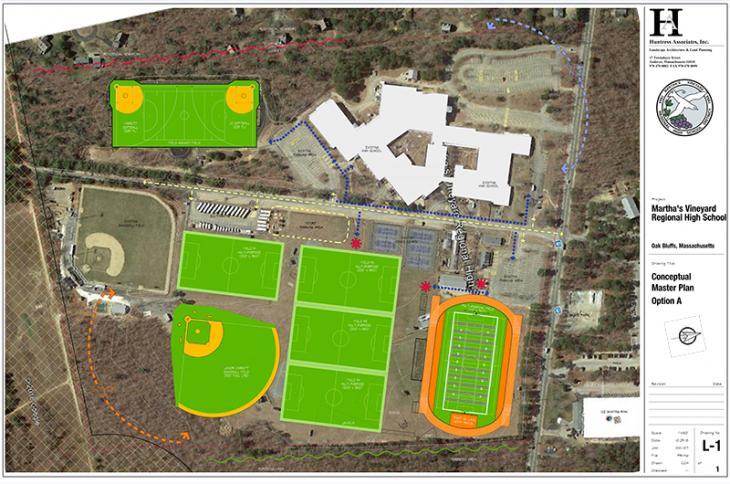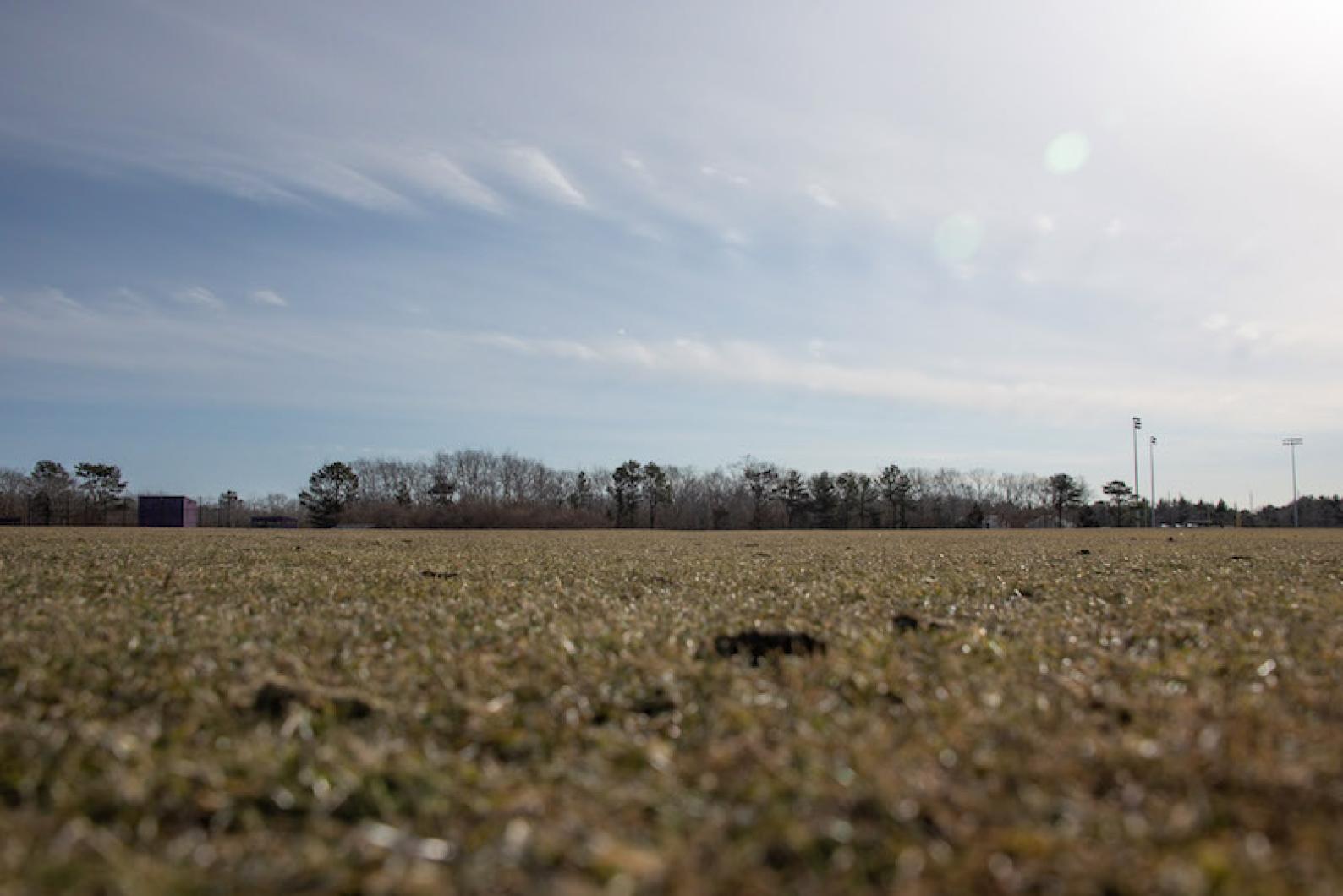After months of deliberations, debate and study, the Martha’s Vineyard Regional High School district committee is set to decide a direction for the first phase of a multi-million-dollar overhaul of school athletic fields.

In a formal presentation last week, consultant and designer Chris Huntress recommended that a new track be built parallel to the Edgartown-Vineyard Haven Road with an artificial turf infield that can be used for football, lacrosse, field hockey, soccer and other sports.
The recommendation comes amid long-running debate over turf versus natural grass fields at the high school. Mr. Huntress, who was hired as an independent consultant last spring, advised including at least one synthetic turf field in the new plan.
“It is not a this or that decision when it comes to turf and grass,” he told the district school committee. “It is a this and that.”
The committee is expected to hear recommendations from the school superintendent and possibly vote on phase one of the plan at a meeting on Feb. 4.
Whatever is decided, it is not yet known how the school will pay for the project, estimated at $6.7 million for phase one alone if artificial turf is used.
The overall cost of the project is pegged at $11.3 million and would include five other natural grass fields south of the track. Mr. Huntress estimated the first phase of the project would cost $5.7 million rather than $6.7 million if the committee opts for natural grass instead of synthetic turf inside the track.
In any scenario, he recommended that the school adopt a grass maintenance program that will provide consistent care for the fields. He said the current poor condition of the fields makes them unsafe.
“It would take a significant change in budgeting and policy for this school to be able to maintain these five grass fields,” Mr. Huntress said.
Planning and discussion around the overdue overhaul for the athletic fields has zigged and zagged for more than two years. Two privately funded groups — one a proponent of artificial turf, the other a proponent of natural grass — have stepped forward at different times to offer funding and partner with the high school. In 2017 the district school committee signed a license agreement with turf proponent MV@Play. Later the agreement was put on hold when Vineyarders for Grass Fields (now the Field Fund) stepped in with a counterproposal. The school committee adopted a 10-year grass fields policy but later was unable to come to terms with the Field Fund for a license agreement. In May 2018, the committee decided to hire Huntress Associates to study the matter and advise an approach.
As part of his work, Mr. Huntress analyzed hours of use on the high school’s current fields. According to his estimates, which include the use of the fields by non-high school organizations such as adult leagues and youth sports, the fields will see 927 hours of use per year. If one synthetic turf field is included in the plan, use of the grass fields drops to between 700 and 800 hours. According to the Sports Turf Management Association, grass fields can support 680 to 820 hours of use depending on maintenance and weather conditions, Mr. Huntress said.
Committee member Robert Lionette asked what the hours of use would look like without use by youth sports or adult leagues.
“It is our job to identify the needs of the high school first and foremost,” he said.
Mr. Huntress replied that in that event, the number would drop to 583 hours per year for the grass fields.
But Matthew Malowski, a Vineyard youth soccer coach, cautioned against planning only for high school usage.

“We only have so many places to go on the Island,” he said. “If the Oak Bluffs School and the West Tisbury School thought like that, there would be no youth soccer on this Island.”
Mr. Malowski strongly backed synthetic turf for the new track infield.
“That’s Disney World for us right there,” he said.
Mr. Huntress suggested a woven fiber turf that would eliminate the use of polyurethane. He also suggested using a more sustainable pine infill rather than the traditional rubber crumble from car tires, as well as a resiliency pad for athlete safety. He said the material is on average replaced every 11 years.
He estimated maintenance costs for the grass fields at approximately $28,000 per year, and put installation at approximately $250,000 per field. The numbers were questioned by a spokesman for the Field Fund, which recently installed two grass fields at the Oak Bluffs School for a totaal cost of under $200,000. “As you know, we have been maintaining 10 fields . . . not at the high school level, at about $10,000 per field,” Mollie Doyle said. “We estimate these [the high school fields] would cost about $20,000, not $28,000 [to maintain],” she also said.
Vineyard schools superintendent Dr. Matthew D’Andrea said administrators would review the Huntress proposal and bring a recommendation to the next committee meeting on Feb. 4.
He also said it would be imprudent to design the complex without the needs of youth sports in mind.
“I’ve said this many times, and I want to say this again. This is a community complex,” Mr. D’Andrea said. “I can tell you right now, our recommendation would include having youth sports.”
Although funding was not discussed at the meeting, in an email to the Gazette on Monday, Mr. D’Andrea said school leaders hoped to do fundraising to pay for the new fields.
This story has been corrected from an earlier version that carried an inaccurate account of the numbers stated by the Field Fund for installing and maintaining other grass fields on the Island.







Comments (16)
Comments
Comment policy »